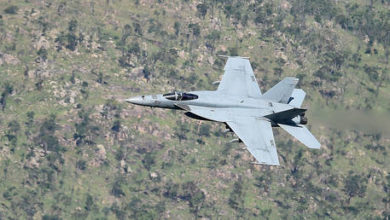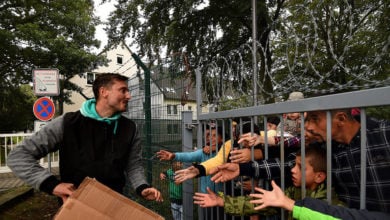How Ukraine Turned the Tide Against Russia

ItIt has been an impressive week for Ukrainian forces, after a long war which appeared to have reached a deadlock. In a dual-axis offensive, Kyiv’s forces have suddenly conducted a near-blitzkrieg level operation in the oblast of Kharkiv, near Ukraine’s second largest city, that has resulted in retaking over 6,000 square km of territory seized by the Russians since the start of the war in February.
Many western military analysts were pleased with the results, but there was real discontent even among the staunchest Vladimir Putin supporters. Was it a success? And will the Ukrainian fall continue to be a success story?
The massive weapon systems that the U.S., NATO and allies have delivered to Ukraine are having a decisive impact on the battlefield. The High Mobility Artillery Rocket System, or HIMARS (High Mobility Artillery Rocket System), is causing Russian defenses to be confused. This system allows for the destruction of crucial Russian logistic nodes with pinpoint accuracy, negating any advantage Moscow enjoys in traditional artillery pieces.
Beyond HIMARS however, the Ukrainians are well-versed in a variety of NATO’s modern military systems. These systems include air defense systems that protect the Ukrainian ground forces and high-tech missiles capable of destroying radars or aircraft from Russia. Although NATO has so far refused to transfer fast jets to Ukraine (discussions are continuing regarding both MIG-29s as well F-16s), airspace above much of Ukraine is still contested. This takes away a critical advantage Russia thought it would enjoy.
The ground campaign has been significantly aided by the transfer to the Ukrainians of highly capable small unmanned offensive aircraft, including for the Switchblade “suicide drone” and other variants that have led to the destruction of numerous Russian tanks and armored personnel carriers. Russian forces have suffered tens to thousands of casualties due to conventional howitzers, massive ammunition transfers, as well as body armor and communications gear. Russian troops are reported to have fled the battlefield and abandoned their posts as a result.
The Russian Black Sea Fleet has become extremely cautious at sea due to western support, especially after their Moskva, their flagship, was lost several months back. The Russians are prevented from trying to attack Ukrainian shores with amphibious weapons by a combination of medium-range cruise missiles and maritime drones. Without the maritime assistance, the massive port of Odessa—the last significant lifeline to international markets for Ukrainian exports—would be at risk.
Learn More: Ukraine’s Past and Future
The constant infusion of intelligence and training has helped to tie it all together, both in terms of equipment.
Ten years ago I was the Supreme All-Allied Commander of NATO. It was a time when I had spent time with Ukrainian military forces. They were eager to learn. Over the intervening years, a steady drumbeat of military exercises—in the air, at sea, and ashore—have gradually improved the Ukrainian’s ability to operate alongside NATO units and quickly adapt to the war they face today. Above all, this training has given the Ukrainians the ability to do what the Russians have failed at so miserably: provide a steady flow of ammunition, food, fuel, and communications forward; and to conduct “combined arms” operations which knit together close air support, artillery, tanks, and infantry maneuver.

Right: The author with Admiral Viktor Maksymov, Commander of the Naval Forces of the Ukrainian Armed Forces (March 2010 to June 2012).
NATO
The most crucial element of western assistance has been the provision of excellent intelligence and extremely useful advice to Kyiv. Although U.S. intelligence may not be perfect, the U.S. has provided the Ukrainians with long-dwelling assessments of Russian positions and vulnerable logistic nodes as well as troop and arm movements and maritime dispositions for the Black Sea Fleet. It also gave them a general sense of Russian intentions. These assessments were complemented by sensible, steady military advice from NATO commands, with which the Ukrainians feel comfortable working.
While all of this has been crucial, the true reason why the Ukrainians succeed cannot be quantified in terms technology, intelligence, or ammunition. They are driven to win. That is the core of their success. The soldiers on the frontlines are those who understand that their children, elders, cities and civilization are behind them. Volodymyr Zelensky is their leader, an inspiring figure who appears everywhere on the battlefield.
Many Russian soldiers are stranded across the border, unaware that they have been involved in an aggressive war against a country they once considered a friend and partner. They are many conscripts. Their general competence is questionable and the losses they have sustained are shocking. Vladimir Putin, their leader in Moscow cannot rationally explain why they are trapped in the chaos.
There are many twists and turns ahead in the Ukrainian War, and Russia still has ugly cards to play—massive attacks on civilian population centers, destroying critical infrastructure, individual assassinations, and war crimes to terrorize the population, chemical weapons, cyber-attacks. The use of tactical nuclear weapons is at the other end of this spectrum.
But given the confluence of high-tech equipment, conventional weapons, intelligence, and military advice—coupled with the fighting spirit of Zelensky and his armed forces—I would not bet against the Ukrainians. They will probably continue their advance as this autumn progresses towards a still uncertain end to this horrible war.
Read More From Time





